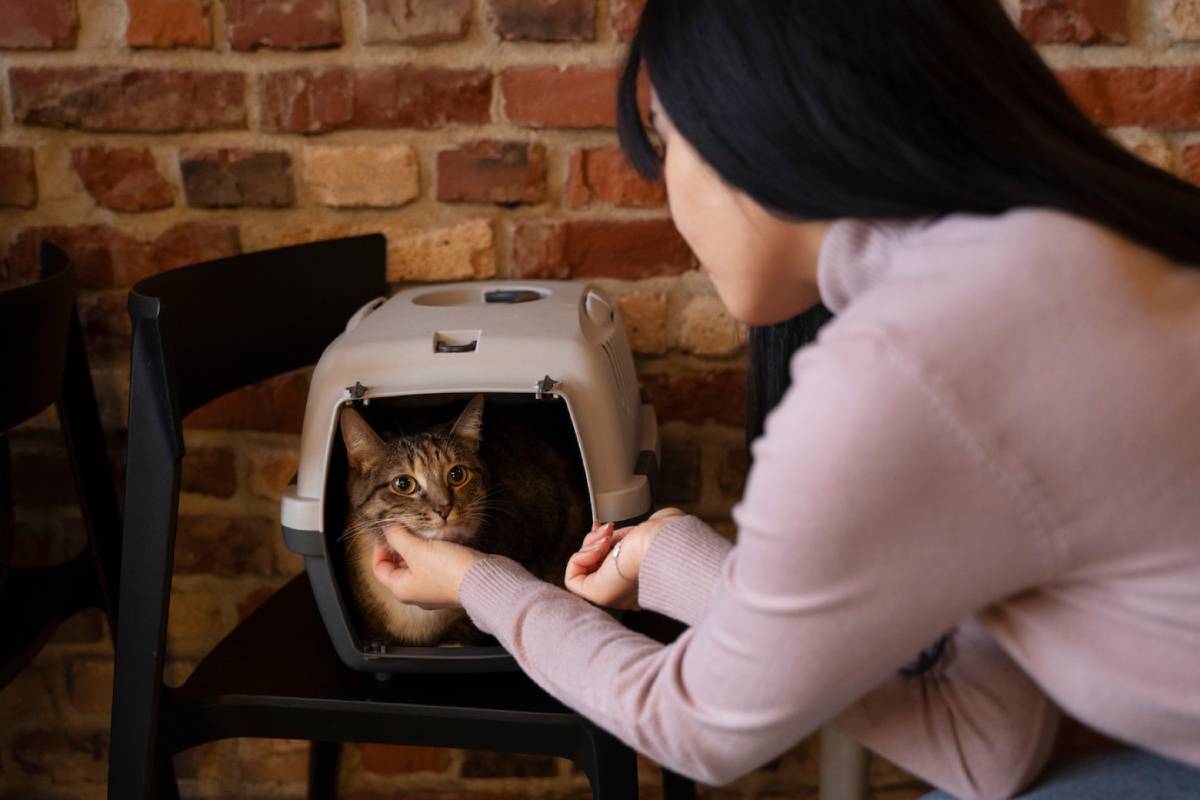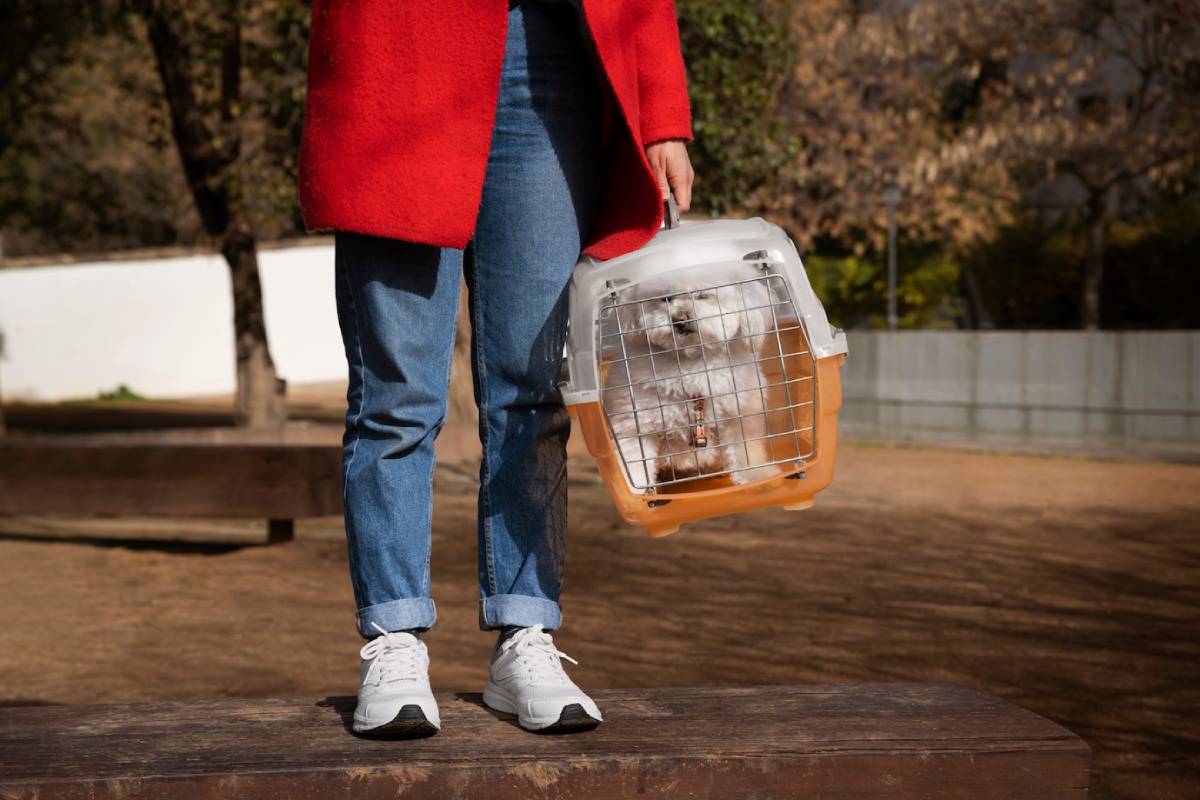
Crate Training Basics for Puppies and Kittens
One of the most important parts of pet care is crate training—and there are many advantages to it for both you and your pet. From puppies to kittens, being familiar with the basics of crate training can pave the way to marital bliss. In this post, we’ll cover all you need to know about crate training for puppies and kittens. We’ll share expert insights, helpful tips, and important things to watch for. By the end of this article, you’ll be equipped with the knowledge to make crate training a positive experience for your furry friends.
Key Benefits of Crate Training
Crate training is more than just a method of confinement. It is a valuable tool that can aid in the development of well-behaved and secure pets. Here are some key benefits that highlight why crate training matters:
Safety and Security

Crate training offers a big advantage: it makes pets feel safe and secure. A crate gives puppies a safe, den-like space, just like their ancestors had. Kittens also feel safe in small spaces. This can help lower their stress and anxiety. Introducing a crate early gives your pets a safe space. They can retreat there when they feel overwhelmed or need a nap.
Facilitates House Training
Crate training for puppies is particularly beneficial for house training. Dogs don’t like to soil their sleeping area. A well-sized crate helps them hold their bladder and bowels until they go outside. This can significantly speed up the potty training process, reducing accidents in the home.
Prevents Destructive Behaviour
Young animals are curious. If left alone, they might act out and cause damage. Crate training helps you control their space when you can’t watch them closely. This keeps your belongings safe and also protects your pets from hazards.
Eases Travel and Vet Visits

Crate-training your pet can make trips to the vet or on holiday easier. Pets that are used to their crate feel less stressed when travelling. This makes the trip more enjoyable for you and your pet.
Getting Started with Crate Training
Let’s look at the steps for crate training puppies and kittens. Approach this process with patience and a positive attitude. This will help ensure success.
Choosing the Right Crate
The first step in crate training is selecting the appropriate crate for your pet. The crate must be big enough for your pet to stand, turn around, and lie down. However, it shouldn’t be too large, or your pet might use one end as a bathroom. For puppies, consider a crate with a divider panel that can be adjusted as they grow. For kittens, a smaller crate or carrier is usually sufficient.
Introducing the Crate
Introducing your pet to the crate is a crucial step that sets the tone for the entire training process. Start by placing the crate in a common area where your pet spends a lot of time. Leave the door open and allow your pet to explore the crate at their own pace. Use treats and toys to encourage them to enter the crate voluntarily. This initial introduction should be positive and stress-free.
Gradual Acclimation
When your pet feels at ease entering the crate, close the door briefly while you stay close by. Slowly make the time longer as your pet gets used to the crate. Reward calm behaviour with treats and praise. This helps show that the crate is a safe and nice place.
Establishing a Routine

Consistency is key to successful crate training. Set a routine. Have your pet spend time in the crate at regular times each day. This could include nap times, meal times, or when you need to leave the house. When your pet uses the crate every day, it will become a normal part of their space.
Additional Expert Tips & Common Mistakes to Avoid
While crate training can be highly effective, it’s not without its challenges. Here are some expert tips to enhance your training experience and common mistakes to avoid:
Expert Tips
- Positive Reinforcement: Always use positive reinforcement techniques to encourage your pet’s cooperation. These include treats, praise, and affection. Avoid using the crate as a form of punishment, as this can create negative associations.
- Short Sessions: Keep training sessions short and fun, especially in the beginning. Gradually increase the duration as your pet becomes more comfortable.
- Comfortable Environment: Add soft bedding and some toys to make the crate inviting. This creates a cosy environment in which your pet will enjoy spending time.
Common Mistakes
- Rushing the Process: Every pet is different. Some may take longer to adjust to crate training than others. Avoid rushing the process, as this can lead to anxiety and resistance.
- Inconsistency: Inconsistent crate use can confuse your pet and hinder progress. Stick to a routine and be consistent in your approach.
- Ignoring Signs of Distress: Pay attention to your pet’s behaviour. Adjust your training methods if they show signs of distress. These signs might be excessive barking or meowing, scratching, or trying to escape.
Advanced Insights and Expert Recommendations
If you want to improve your crate training, check out these advanced tips and advice:
Understanding Your Pet’s Needs
Every pet is unique. Knowing their needs can make crate training easier. Observe your pet’s behaviour and adjust your training methods accordingly. Some pets like a quiet spot for their crate. Others prefer to be where the action is.
Incorporating Training into Play
Crate training doesn’t have to be a separate activity from playtime. Incorporate the crate into your pet’s play routine by using it as a base for games like fetch or hide and seek. This helps your pet associate the crate with fun and positive experiences.
Gradual Transition to Alone Time
To help your pet feel comfy in the crate alone, slowly increase the time they spend inside while you’re out of the room. Begin with short intervals. Slowly extend the duration as your pet becomes more comfortable with solitude.
Conclusion: Making Crate Training a Positive Experience
Good crate training can lead to a happier life between you and your pet. Learning the basics of crate training is key. If you practice the best tips and avoid common mistakes, you and your dog will have a positive and rewarding experience. However, make sure to be consistent and patient, as each pet learns at its own pace.
Good luck if your readers are planning on crate training. Just remember to make the process as enjoyable and painless as possible for your dog! Training your dog takes time and effort. It’s not just rewarding for your pet. It’s also a great way to strengthen your bond with them.
Are you ready to start crate training your puppy or kitten? Start today, and watch your pet blossom into a well-mannered and confident companion.


